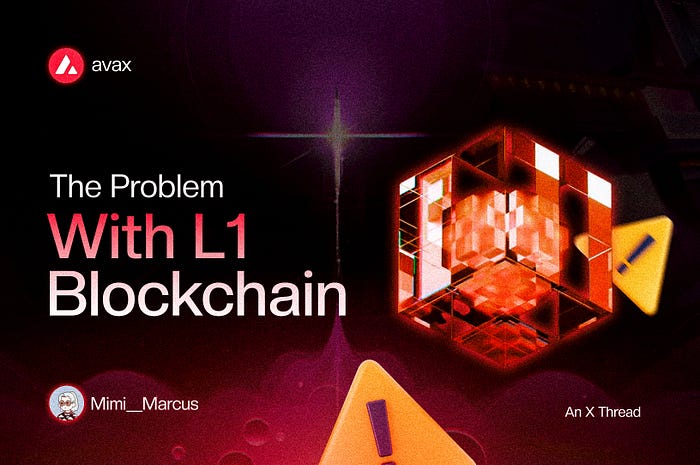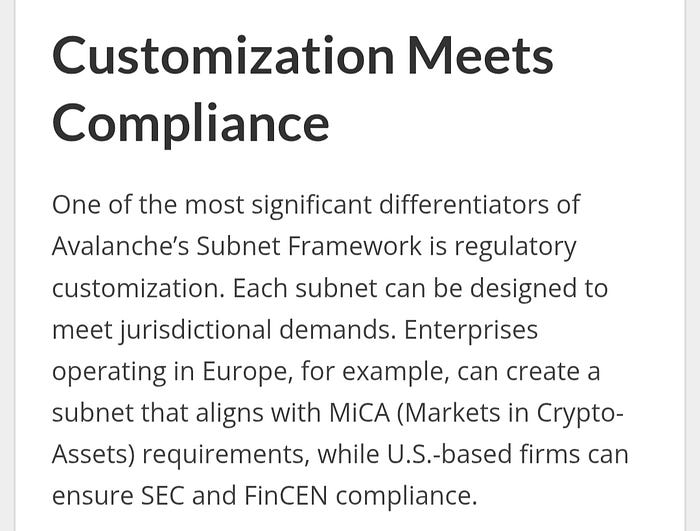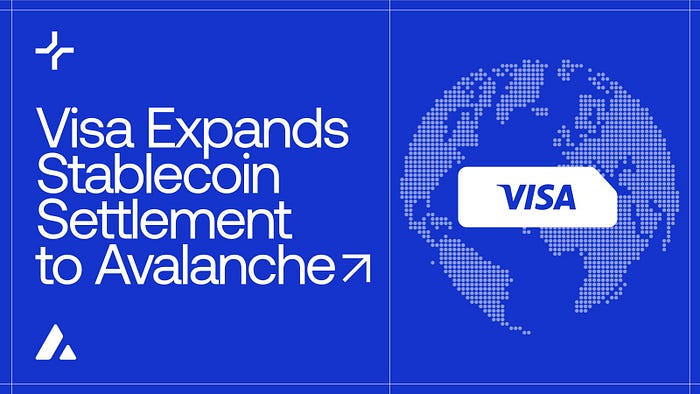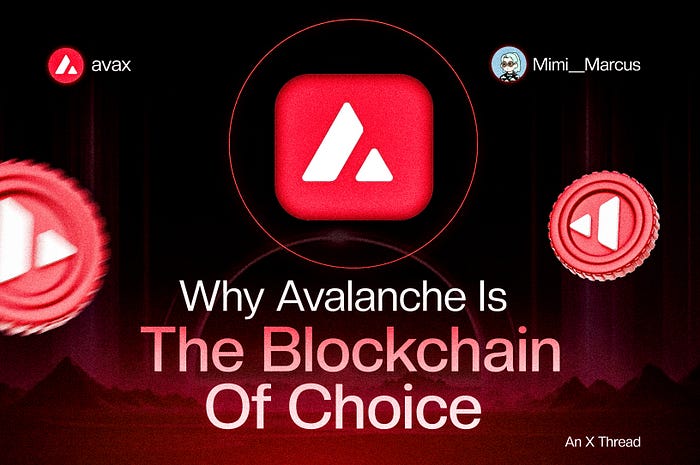The problem with L1 Blockchains in 2025
One Blockchain attempt to solve the Blockchain Trilemma problem situation from the onset.

Not many L1 blockchains can say they have an "institutional-grade architecture".
And this is because barely a handful of them have a blockchain that has the three expected pillars of a blockchain – decentralisation, scalability, and security – with no tradeoffs.
Somehow, L1 blockchains have to pick which trade-off to keep or work with.
This in itself has for the longest time posed limitations to how the blockchain works or the load it can carry.
And when we are talking about adoption, You know this is a red flag.
Because the things they might have to give up to be in this space gradually make it an expensive and risky venture.
Which took me on a trip to observe which of these major blockchains had to do things differently and how they did things differently.
One major pointer is
Avalanche’s Architecture
Launched in 2020, a deep dive shows me that they started off deciding to have all 3 without giving off any.
They were secure, scalable and fully decentralised in one.
Built to last, it's no surprise adoption is taking off from there.
And the data agrees:
➥ 54% of RWA on the blockchain are built on Avalanche.
➥ Regional stablecoins are taking off from here.
➥ The US Department of Commerce began publishing the GDP data on Avalanche.
➥ Institutional bodies like Skybridge and Nonco are leveraging Avalanche's subnets for tokenisation and financial products.
➥And the list goes on.
Avalanche has proven itself as a blockchain built to not just serve the DeFi industry but the real world as well.
I earlier said Avalanche was built to last, and this is because of its structure.
The engineers at Avalanche set up a chain structure that can be likened to a floating balloon, but instead of the basket being held up by one extremely large balloon, it is held up by 3 different sizable balloons.
which is the three-chain structure:
→ The Platform Chain (P-Chain)
→ The Contract Chain (C-Chain)
→ The Exchange Chain (X-Chain)
which helps evenly distribute the load and enhance the strength and resilience of the chain.
That C-chain subnet is one of the top-tier reasons Avalanche has been a blockchain of choice for stablecoins, institutional finance and payment infrastructure.
When it provides a chain where you just can’t build, but you can also easily transfer your product and modify it as you see fit with no restrictions from the mother chain.
Just freedom that comes with enhanced security and increased speed.

In today’s blockchain space,
One topic on everybody’s lips is the topic of adoption, and a good % of CT believes that it will begin from the stablecoins and payment channels.
And with the moves stablecoins and institutions are making,
It is looking like something @Avalanche will front-run.
Regulations are a major deal when it comes to stablecoins and institutional finance, and this is exactly what Avalanche was built for through its tailored chains.
Avalanche’s customisable chains allow institutions to deploy with their rules and compliance frameworks, a level of flexibility that makes Avalanche one of the most regulatory-ready blockchains today.
As CryptoVevo explains, Avalanche’s Subnet Framework was created to help enterprises and financial institutions build regulatory-compliant blockchain environments.

But beyond just compliance and subnet as a theory, the vision is already being realised:
1️⃣ Through Stablecoins:
The recent launch of $FRNT, Wyoming’s first state-issued stablecoin on Avalanche.
Shows the Avax’s regulatory adaptability in practice and in real time.
Fully regulated and government backed, $FRNT signals growing trust while also highlighting Avax’s alignment with evolving legislation.
Their tweet here sheds more light.
From another perspective, when it comes to quality, speed and technical efficiency, Asian countries like Japan and South Korea have long been at the forefront of innovation.
The KRW1 and JPYC, both regional stablecoins deployed on Avalanche, are two strong indicators of trust in the network.
With South Korea’s Digital Asset Framework paving the way for a regulated digital won and Japan’s stablecoin laws enabling enterprise-grade innovation for yen, institutions are taking note.
{https://x.com/avax/status/1968464991431933980}
Major players like Sumitomo Mitsui Banking Corporation (SMBC) and @Fireblockshq are already partnering with Ava Labs to develop a stablecoin payment infrastructure for Japan.
A collaboration that underscores Avalanche’s growing reputation for compliance, reliability, and technical excellence.
2️⃣ In Payment Infrastructures:
Payment infrastructures are beginning to echo the same confidence on the chain that stablecoins have.
The Wyoming government’s partnership with Rain allows the $FRNT stablecoin to be spent anywhere Visa is accepted through the Rain Card.
Bringing utility to on-chain assets seamlessly.
Visa recently added Avax as one of the supported blockchains for its stablecoin settlement service.
What this implies is that,
Through Visa, we can now complete stablecoin transactions like USDC, PYUSDC, etc., directly on Avalanche.

Avalanche didn't stop at powering payment infrastructure.
But they are also connecting them and paving the path for global finance.
In Japan, the SMBC’s partnership with Tix and aims to enable real-time settlement and programmable payments across thousands of merchants.
In South Korea, INEX’s partnership with Avalanche enables regulated stablecoin payments, connecting the nation’s retail payment system with @Avax.
These developments point to how Avalanche’s subnets don’t just enable experimentation but also form the backbone for compliant and high-speed payment networks.
See
3️⃣ In Institutional Finance
The bridge between stablecoins and the people, blockchain and mass adoption,
and the transition between on-chain and off-chain economies through tokenisation.
Hides in institutional finance.
When it’s not stablecoins and payments,
Avalanche is working on large-scale tokenisation through institutional finance, with notable institutions bringing real assets on-chain.
→ Skybridge’s partnership with Tokeny plans to tokenise $300M worth of its pioneer hedge funds on e.
→ Nonco brings in real-world FX liquidity to the blockchain through Avax.
What this means and indicates is a bridge between traditional finance and RWA directly on the Avalanche infrastructure,
It points to institutional-level performance, regulatory alignment and a more reliable FX market for stablecoins.
Generally, this move facilitates a larger-scale adoption.
It is simply Avalanche because when it comes to real-world interactions or financial systems,
Then there can be no trade-offs. Speed, security and flexibility all have to be up to par to fit.

And an avalanche from the onset created a platform for this to not just happen but for take-offs as well.
From their seamless subnets to the speed and optimal security.
Across borders – from the US to Asia to the world – @avax is setting the stage as the blockchain where institutions find peace.
Stablecoins have a home.
And payments have a path.
They are shaping the future of finance and doing it on-chain.
And that wraps this up.
The shift is already on, and many of us are party to it.
But to get a clearer idea of the tech facilitating top industry movements, then visit:
Avax.network.
Blog: Avax.network/blog
And join the amazing community: chat.avax.network.
And while you do that,
Comment your thoughts on regional stablecoins. 👇🏼👇🏼
Listen To The Article

Black Friday 30%
Offer









